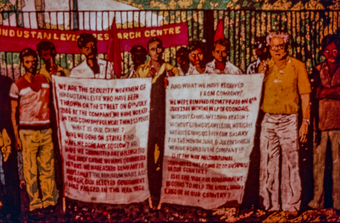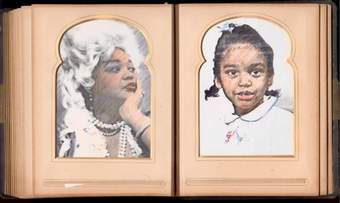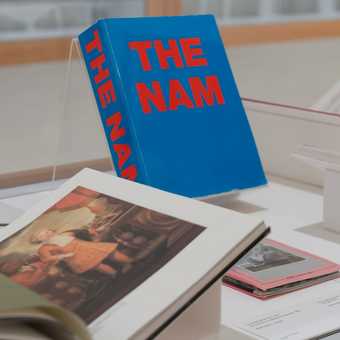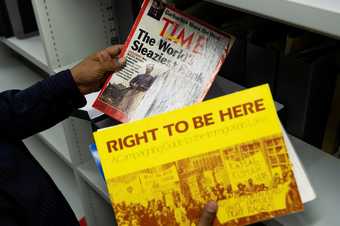
Shaheen Merali
Unilever Strike 1987/88
Batik on untreated cotton
In 1989, Shaheen Merali curated and organised a contingent of five Black and Asian artists, including himself, Sonia Boyce, Keith Piper, Al-An deSouza and Pitika Ntuli to exhibit at the Havana Biennial.1 In this conversation Ntuli and Merali outline the significance of the biennial as a moment of visibility for Black and Asian artists in Britain, and as an example of the transnational alliances they were creating. The Havana Biennial not only countered the lack of representation of Black and Asian artists in the UK but also emerged as a stage for the progressive notions of internationalism, solidarity and criticality that were constitutive of their work, connecting them to an international art world.
Merali and Ntuli trace networks of friendship, solidarity and creative organising among artists of colour in Britain and the evolution of grassroots organisations including Africa Centre and African Dawn. Ntuli reflects on the experience of being an artist in exile and the evolution of his sculptural, poetic and pedagogical practices. He describes how his creative practice survived during his imprisonment in South Africa and the resourcefulness with which he had to operate. Ntuli also shares his poetry and reflects on writing as a medium that he used to critique the apartheid regime. He discusses his work as a teacher and facilitator in higher education settings, as well as grassroots community engagement projects.



